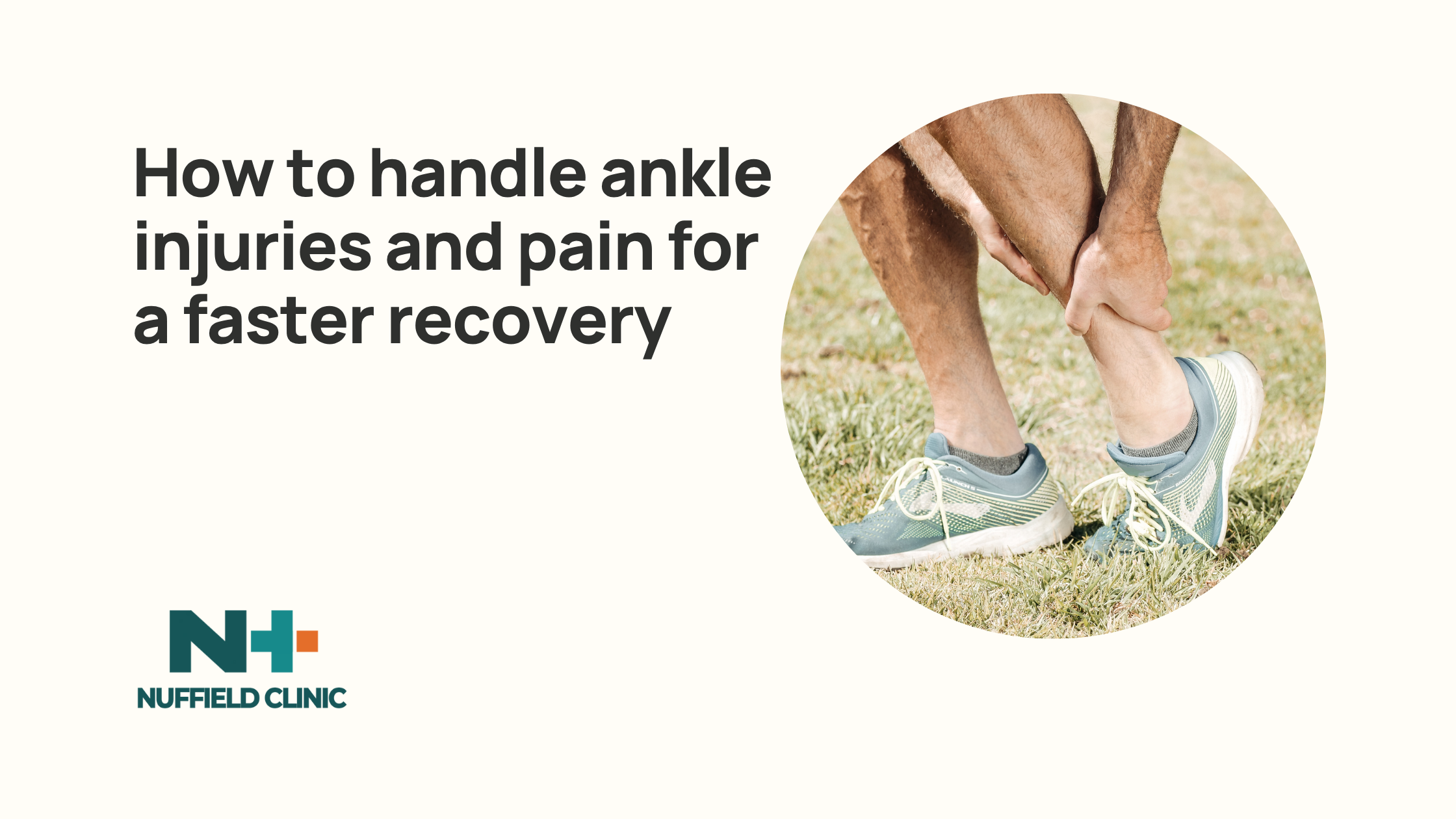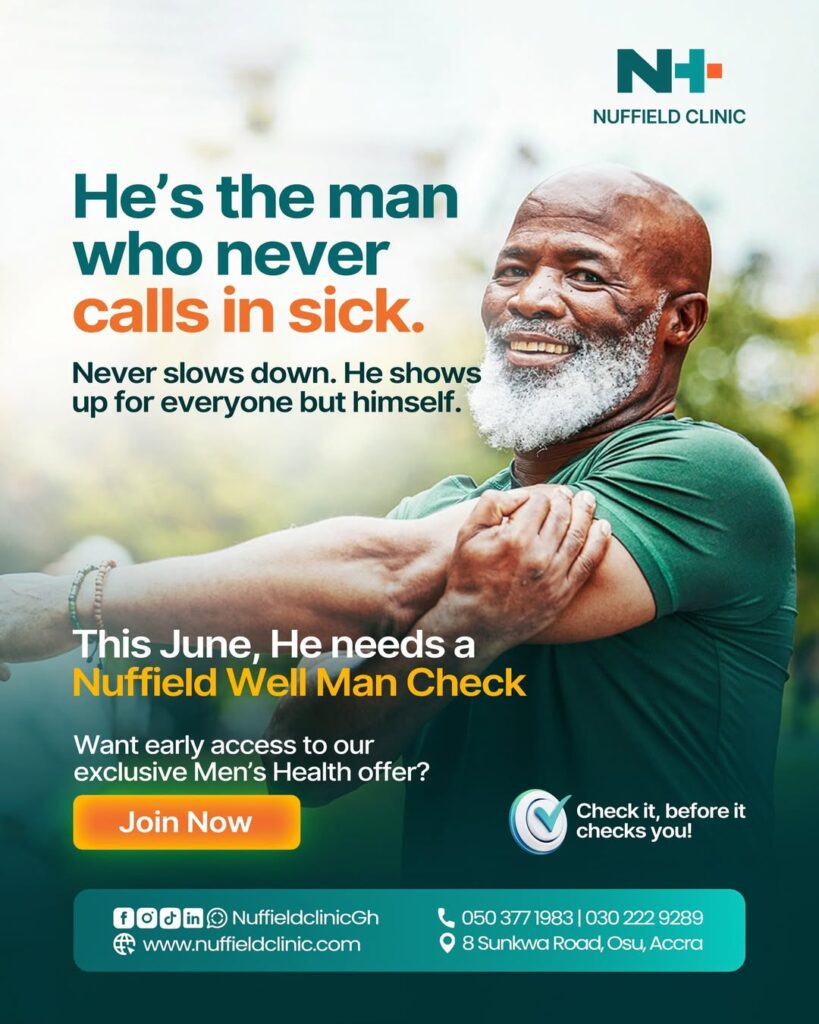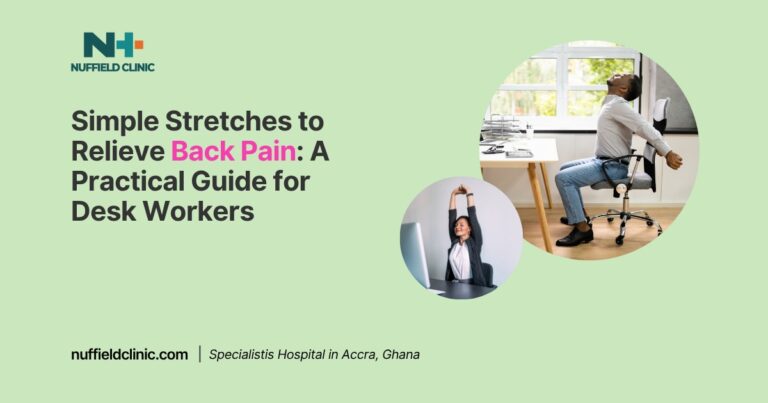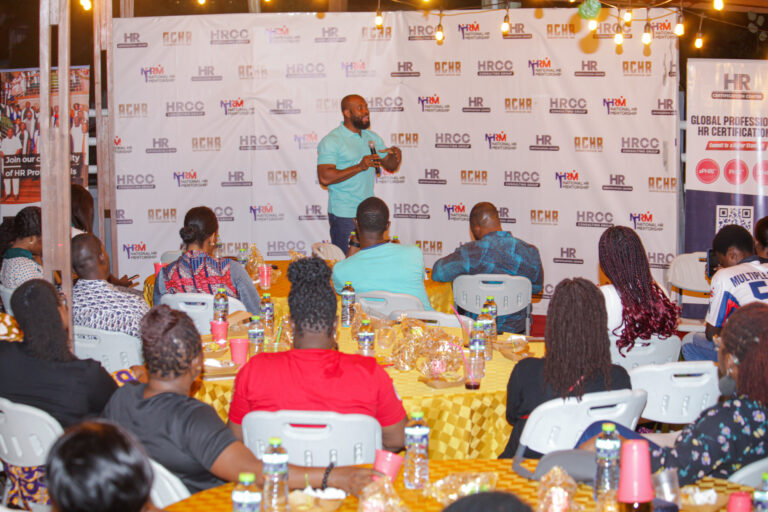Expert Guide on how to handle ankle injuries and pain for a faster recovery

How do you handle ankle injuries and pain for a faster recovery? If you’ve ever twisted your ankle on a walk, stumbled during a workout, or stepped off a curb the wrong way, this article is for you. Maybe your child came home limping after a football game, or you woke up with ankle pain after a weekend hike. These situations are more common than most people realise, and knowing what to do in the first few minutes can make all the difference.
At Nuffield Clinic, we believe that anyone, not just medical professionals, can make a major impact in recovery when equipped with the right knowledge. This article is designed for everyday people: active adults, parents, athletes, workers on the move, and anyone who wants to prevent minor ankle injuries from becoming major setbacks. We’ll walk you through exactly what to do when an ankle injury strikes and what steps lead to a full recovery. You’ll gain expert-backed knowledge from our team of physical therapists, without the medical jargon.
And more importantly, you’ll know when it’s time to stop trying to manage things on your own and come in for expert help.
What happens when you injure your ankle?
Ankle injuries, whether sprains, strains, or more serious trauma, are some of the most frequent musculoskeletal issues people face. These injuries can vary in severity, but they usually share a few things in common: pain, swelling, and a frustrating loss of mobility.
The problem is, many people either brush them off or go straight to the wrong remedies, like applying heat too early or walking it off. These missteps can delay healing or make the injury worse.
Here’s the good news: there’s a proven, reliable way to care for your ankle from the moment it gets hurt. It’s known as the PRICE or RICE method. Don’t worry, we’ll explain both.
The first 48 hours: What to do and what to avoid
Time is critical. The faster and more appropriately you respond to an ankle injury, the better your outcome. Every professional, from emergency doctors to physiotherapists at Nuffield Clinic, follows one gold-standard protocol for first aid:
PRICE or RICE, which stands for:
- Protection/Rest
- Ice
- Compression
- Elevation
Though the acronyms differ slightly, both approaches focus on the same things: reducing pain and swelling, preventing further damage, and laying the foundation for a good recovery.
The first step is simple, but critical: stop immediately. Whether it’s running, jumping, or just walking, continuing the activity after an injury can cause more harm. Rest the ankle and avoid putting any weight on it during the first 24–48 hours.
Next, reach for the ice, not the hot water bottle. Cold reduces inflammation and numbs pain. Wrap an ice pack in a towel or cloth and place it on the injured ankle for 15–20 minutes at a time. Do this every 1 to 2 hours for the first two days. Never apply ice directly to the skin, and never leave it on for more than 20 minutes. Direct contact or overuse can cause frostbite or tissue damage.
Compression is the third piece of the puzzle. Wrap the ankle with an elastic bandage or compression wrap. Start from the toes and move up to just above the ankle. It should feel snug, but not tight enough to cut off circulation. If your toes become numb, blue, or cold, loosen the bandage immediately.
Then, elevate your ankle. Prop it up on pillows so it stays above the level of your heart. This helps fluid drain away from the injured area, reducing swelling and speeding up healing. Try to keep the ankle elevated as much as possible, especially in the first 24 to 48 hours.
And one more thing, avoid heat and massage in the early stages. While they might feel comforting, both can increase inflammation and make things worse in the first few days.
How long should you continue this care?
The PRICE or RICE method should be your go-to for at least 48 hours. Some people may benefit from compression wraps for two to three days, depending on how the swelling progresses. But if pain, swelling, or mobility doesn’t improve after a couple of days, you may be dealing with more than just a minor sprain.
When should you see a doctor or physical therapist?
Not all ankle injuries are the same. Some require more than just ice and rest. If you experience any of the following, it’s time to seek professional care:
- You heard a pop at the time of injury
- You can’t put weight on the ankle at all
- There’s severe swelling, visible deformity, or numbness
- The area becomes discoloured
- Pain persists beyond a few days with no signs of improvement
At Nuffield Clinic, we often begin with a detailed assessment and, if necessary, refer for imaging like X-rays, MRIs, or ultrasounds. These help us rule out fractures, torn ligaments, or other more serious issues. If your ankle needs a brace, crutches, or physical therapy, we guide you every step of the way.
What happens after the pain fades?
Once the initial inflammation goes down, healing doesn’t stop; it enters a new phase. This is where rehabilitation becomes essential. Even a mild sprain, if left untreated, can lead to chronic instability or future injuries.
Our physical therapists at Nuffield Clinic focus on restoring your ankle’s range of motion, flexibility, strength, and balance. These exercises are carefully structured to help you transition from basic movement to full activity, whether that means running, walking, or climbing stairs with confidence.
Rehabilitation isn’t just about healing; it’s about preventing recurrence. Many ankle injuries happen again because the joint isn’t fully stabilised before people return to their normal activities. Don’t make that mistake.
Can ankle injuries ever require surgery?
Yes, but it’s rare. Surgery is usually only considered when the ankle remains unstable after months of therapy, or when there’s a severe tear or fracture that can’t heal on its own. Fortunately, with the right care and expert support, most people recover fully without ever needing an operation.
An ankle injury can be a small inconvenience or a serious disruption; it all depends on how you handle it. The first 48 hours are crucial. But even after that, recovery is a journey that requires the right steps, the right guidance, and sometimes, the right hands.
At Nuffield Clinic, our team of skilled physiotherapists provides personalised treatment plans for ankle injuries and pain. We go beyond general advice to offer expert care that fits your specific needs and goals.
If you or a loved one is dealing with a recent ankle injury or struggling with one that hasn’t healed properly, we’re here to help.
Don’t leave your recovery to chance. Book an appointment today and let our professionals get you back on your feet, safely and confidently.






